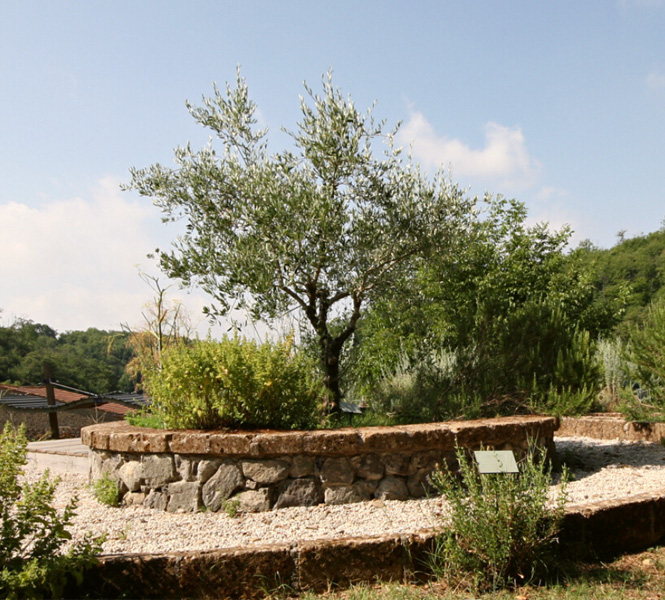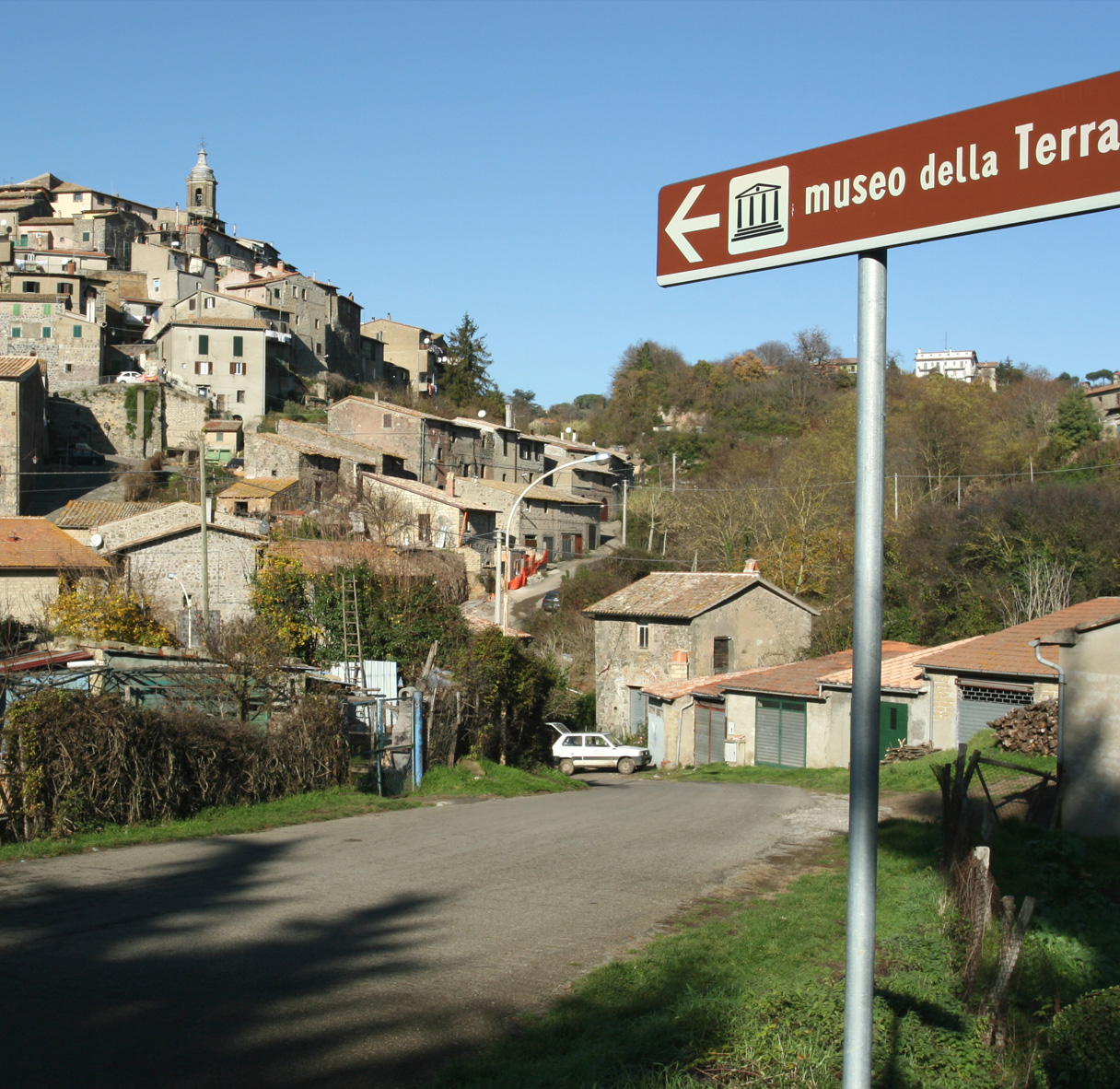Project Description
The exhibition path outside the Grancia offers some hints and suggestions of the aforementioned work. Right outside the museum, visitors find themselves immersed in colors and scents that echo the museum’s exhibition throughout every season, with the use of corners and flowerbeds to recreate traditional orchards and vineyards and hedges surrounding the fields that connect to the woods. These very hedges are a continuation of the agroforestal landscape that extends beyond the town, which marks man’s millennial activity in the area.
The outdoor area revolves around the vegetable garden, a carefully curated grid with flowerbeds of traditional plants from the area that are rotated yearly and according to the season. Strolling around the garden gives visitors a chance to learn how to recognize different plants and vegetables from our table, which plants belong to the same botanical species and where they come from and, presumably, how long said plants have been part of the Latera farmers’ diets.
The vegetable garden was created with the intent to gather and display the local varieties with the belief that a specific culture and history is tied to the use of a particular fruit or vegetable. The variety of the plants not only represents a local resource but also gives an insight into the soil properties, farming techniques and the history of the local community. That’s why preserving and enriching the local germplasm is important not only to halt genetic erosion but to protect the cultural local diversity as well.
In addition to the vegetable garden, the Museum offers a garden of herbs displayed in concentric flowerbeds with edible plants used to season food that are also well known for their medicinal properties.
The entire area is surrounded by hedges and enriched with bushes.




